The Second Generation: the Other Players (Part three)
This chapter will be about the Magnavox Odyssey 2, 3, Mattel Intellivision, ColecoVision, Bally Astrocade, Sega SG-1000, Vetrex, Microvision, and the RCA Studio II.
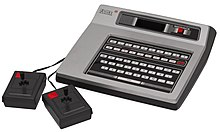
Console design plus controllers
The Magnavox Odyssey 2 is the true successor to the first ever video game console, the Magnavox Odyssey created by legend Ralph Baer (not the Magnavox 100 pong-sole series). made by Phillips and Magnavox; this was one of first major contenders to show up after the success of Fairchild Channel F and especially the Atari 2600. It was a major success in parts of Europe and Brazil but completely failed in Japan and did only okay in America but in total being third place in the second generation only behind the Nintendo Entertainment System/Famicom and the Atari 2600. It was the first major attempt to have Computer functions on a home console and it lasted from 1978 till 1987 in some parts of Brazil. Its biggest contribution to gaming was with one of its most well known games that was released on it called KC Munchkin that helped set copyright laws for video games in the future. It also saw some of the first European developers like Ultimate play the Game and Rally release some of its first licensed third party games on the Magnavox Odyssey 2.
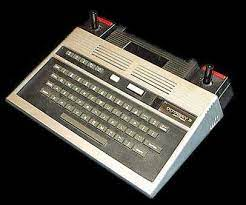
Console Design plus controllers
The Sequel to the Odyssey 2 and released only in Europe and America in late 1982. it was supposed to be a major improvement over the somewhat limited Magnavox Odyssey 2 and it did succeed in doing that and it did have support from Rally and the newly bought Seymour Corporation. it had a significantly better keyboard compared the Odyssey 2, it had a better controller than the Odyssey, the Graphics were much better, it had much better sound and actual speech capabilities than the predecessor, it was backwards compatible, and it was a fully blown computer with access to cassette and Disk drives by plugging them in to the expansion port. The problem with the Odyssey 3 was that it was not comparable to the ColecoVision and the other consoles coming out in 1982; it was comparable in many ways to the NES and Intellivision that were released in 1978/1979. This was a massive issue for the Odyssey 3 as it was priced around the same as the ColecoVision and was worse in every way so the ColecoVision made this console a hard sell. and the video game crash of 1983 killed any chances of success and forced Phillips for a little bit to be out of gaming for a bit until the release of the Phillips CDI in 1988.
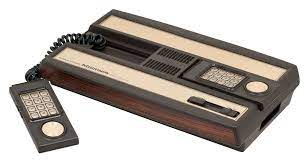
Console Design
The Mattel Intellivision was Mattel's first major video game attempt aside from Mattel Auto Race released in 1976 (one of the first handheld video games ever made). Released in 1979 in the United States; it was a major improvement compared to the Atari 2600 and Fairchild Channel F and started a trend for video game consoles to have phone pads on their controllers this generation. Being highly expandable and heavily marketed in the United States made this system a decent hit. It had a ton of add-ons released for it like the Intellivoice for games like B-17 Bomber in 1981 and the ECS in 1983 that turned the Intellivision into a full blown Computer. the Intellivision lasted for a while and Intellivision seemed to be a big player in the Video Game Industry for years to come. this did not happen as the crash of 1983 happened and it killed most of Mattel's ambition plus the failure of the ECS and the home computer the Mattel Aquarius just killed everything that Mattel was developing including the Intellivision 3 (a true successor) and got out of the industry for good. though they would make some games and game accessories later on.
The legacy of this console was that it was another decent and successful console to come out during this era when everyone was making a console.
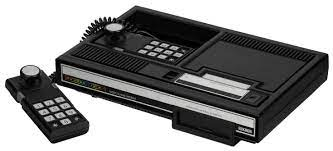
Console Design plus the controllers
Coleco was a player in video games for a little bit creating the Telstar series of pong-soles and then the Coleco Telstar Arcade in 1977 (this will be mentioned next part). they stayed out of gaming for a while until coming back in 1982 with the ColecoVision and it was a big deal when it came out as it was one of the most powerful systems to come out this generation and for a price a good bit lower to Atari 5200 plus it can play 2600 games with an adaptor made it a very good deal for people who was interested into getting a new console. It did very well in the holiday season of 1982 and did even better in the first half 1983 until the VG crash caught up to ColecoVision and Coleco released the Adam in 1983. The Adam ITTL had most of its major problems fixed and it did very well in the Holiday Season of 1983. This was bad for the ColecoVision as this would mean that they would move over to the computer market and abandon the home console market entirely and in 1986 that is exactly what they did as they were releasing another home computer called the Chameleon and fully discontinued the ColecoVision worldwide.
Its legacy was that it had fantastic graphics for the time and it had great ports of less popular arcade games like Lady bug and Venture.
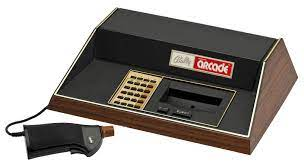
Console Design plus the controllers
The Bally Astrocade was the Neo Geo of the 1970's and released in November 1977. This was released right after the Atari 2600 and it was released before the 1977 Christmas Season. Developed by Bally/Midway and Dave Nutting Associates; it was the most powerful console for the first half of this generation with its sound capabilities and high sprite count. It could also be used as a simple computer with a BASIC cartridge. Bally Astrocade had some big heavy hitters on it like the best initial ports Wizard of Wor, Sinistar, Pac-Man, and Space invaders but this power came at a price that killed the console from truly competing with Atari 2600. The Bally Astrocade cost a crisp $299.99 at launch (over $1,500 dollars in 2024 dollars); this price meant that it could not compete with Atari 2600 as the 2600 was significantly more cheaper than the Astrocade and was the more popular option overall. The Astrocade did hold a niche for a long time as being the true arcade experience at home but this would later be eroded by the second half of the generation being similar and even more powerful than the Astrocade and the Market share started to drop, then the crash plunged it down like a cliff. Bally at this point was ready to be done with the Astrocade to focus on Multi-platform and Arcade games and killed the Astrocade in 1985.
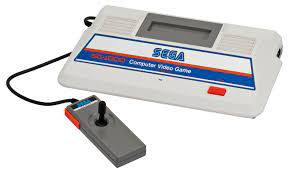
Console Design plus controllers
Sega in 1982 was still owned by Gulf/Western and they partnered with Coleco to release the ColecoVision in Japan under the Sega brand with a custom V-RAM chip as the major difference along with the simpler controllers for the Japanese market. Sega in 1982 was pretty big as it was the second biggest video game company in Japan at this point and was a major home computer developer with the decently popular SC-3000. It also had Sega/Gremlin in America and made some big games like Zaxxon. in 1983 as the SG-1000 was being developed; Gulf/Western was going though very turbulent times and sold all of Sega to Hayao Nakayama and Sega Enterprises entirely for 300 million. This would set the events to come for Sega in the future to be a giant in the industry as now. but before they had massive success they had the SG-1000; based off of the ColecoVision with some major improvements it was a failure in the Japanese market because of the Famicom and then destroyed by the Super Famicom in 1984. This was expected by Sega and was working on multiple Home Console and Computer projects to go into the future. One was with the Enterprise 64 as Sega funded the system and released it as the Sega Enterprise 64 everywhere else in 1983 to decent success. Another project was with Sega making a 16-bit computer by buying the newly formed Amiga Corporation to create the Sega Amiga 1000 in 1985 to massive success. and the final project that was happening was developing a next generation home console in order to compete with the SNES/Super Famicom worldwide. This would be called the Sega Master System and it would be released worldwide in 1985.
The legacy of the Sega SG-1000 was laying the groundwork for the Sega that was to come.

Console plus the controllers
This will be pretty short: the Vetrex was the First and only console to ever use Vector Displays for the graphics. created by Milton Bradley and released in 1982. It was a Niche console designed for games that used vector displays and mastered them to a tee. It was also the first to have a light pen and 3d available games on it. It was a pretty big failure due to the limitations of the Vector display and the Video Game Crash of 1983 and finally made Milton Bradley leave out of gaming forever.
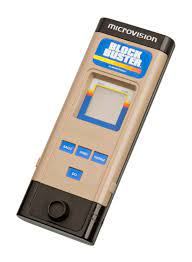
The console design
This will be pretty short also: the Microvision created by Milton Bradley was released in 1978 and was the first Handheld game console and influenced the Nintendo Game and Watch to exist. it had cartridges but in a way that every piece of tech aside from the screen and controls can be swapped when you get a new game. It was a decent success during the late 1970's and early 1980's and then was discontinued when Milton Bradley got out of the video game industry in 1984.
RCA started development on the RCA studio II in 1977 after the success of the Fairchild Channel F and since RCA ITTL never sold its computer division; they developed a new variant of the CDP chip for a video game console and a chipset ready for a home console. when it was released in 1980; it was an okay piece of tech for the time, did okay, and was just fine. and it would eventually die in 1985 due to the crash and they never came back fully, but they did something surprising ITTL; they survived and would thrive during the 80's and the future. RCA would survive ITTL by having most of its major problems inside being fixed like its internal politics. They helped develop with JVC the VHS and created Selectavision (CED) that were major to decent successes, developing a bunch of new technologies, still owning NBC, and buying MCA/Universal and Fairchild in 1985. They will be pretty important in the future of TL as they do many things for the tech and entertainment but will not be focused on unless it is important to the chapter or when I talk about them at some points.
The next and the final part will be about all the minor consoles that came out this generation and finally the video game crash of 1983. After that we will talk about the Super Famicom/SNES, Nintendo's System 2 arcade board, the first generation of the Nintendo Namco Polygonizer, and Nintendo's media like Nintendo Power, Dynamo Pictures, and Super Comic Time.
edit: Retconned RCA making Laserdiscs and added SelectaVision to what they made.
Magnavox Odyssey 2/ Philips Videopac
Console design plus controllers
The Magnavox Odyssey 2 is the true successor to the first ever video game console, the Magnavox Odyssey created by legend Ralph Baer (not the Magnavox 100 pong-sole series). made by Phillips and Magnavox; this was one of first major contenders to show up after the success of Fairchild Channel F and especially the Atari 2600. It was a major success in parts of Europe and Brazil but completely failed in Japan and did only okay in America but in total being third place in the second generation only behind the Nintendo Entertainment System/Famicom and the Atari 2600. It was the first major attempt to have Computer functions on a home console and it lasted from 1978 till 1987 in some parts of Brazil. Its biggest contribution to gaming was with one of its most well known games that was released on it called KC Munchkin that helped set copyright laws for video games in the future. It also saw some of the first European developers like Ultimate play the Game and Rally release some of its first licensed third party games on the Magnavox Odyssey 2.
| Release Date | September 1978 (NA) November 1978 (EU & PAL) September 1981 (JP) |
| Cost | $179.99 at launch |
| Specs | https://en.wikipedia.org/wiki/Magnavox_Odyssey_2#Technical_specifications |
| Games Released | 142 by 1987 |
| Amount Sold | 7.6 Million by 1987 (WW) 5.6 Million (EU & PAL) 1.8 Million (NA) 200,000 (JP) |
| Lifespan | 1978 - 1985 (NA) 1978 - 1986 (EU) 1978 - 1987 (PAL) 1981-1983 (JP) |
Magnavox Odyssey 3
Console Design plus controllers
The Sequel to the Odyssey 2 and released only in Europe and America in late 1982. it was supposed to be a major improvement over the somewhat limited Magnavox Odyssey 2 and it did succeed in doing that and it did have support from Rally and the newly bought Seymour Corporation. it had a significantly better keyboard compared the Odyssey 2, it had a better controller than the Odyssey, the Graphics were much better, it had much better sound and actual speech capabilities than the predecessor, it was backwards compatible, and it was a fully blown computer with access to cassette and Disk drives by plugging them in to the expansion port. The problem with the Odyssey 3 was that it was not comparable to the ColecoVision and the other consoles coming out in 1982; it was comparable in many ways to the NES and Intellivision that were released in 1978/1979. This was a massive issue for the Odyssey 3 as it was priced around the same as the ColecoVision and was worse in every way so the ColecoVision made this console a hard sell. and the video game crash of 1983 killed any chances of success and forced Phillips for a little bit to be out of gaming for a bit until the release of the Phillips CDI in 1988.
| Release Date | August 16, 1982 (NA & EU) |
| Lifespan | 1982 - 1985 (NA) 1982 - 1986 (EU) |
| Amount Sold | around 750,000 by 1986 |
| Cost | $199.99 at launch |
| Backwards Compatibility | Yes (all Magnavox Odyssey 2 games and accessories) |
| Developers | Magnavox/Phillips, Intel |
| Manufacturers | Intel, Magnavox/Phillips |
| CPU | Intel 8048 (8-bit; 5.91 MHz) |
| VDP | Intel 8245 |
| RAM | 16 KB of Main RAM 8 KB of V-RAM 24KB of S-RAM |
| Media | Cartridge (32 KB Maximum) Cassette and Floppy Disks (64 KB Maximum) |
| Graphics Modes | Bitmap and Tile Graphics |
| Sprites | 8 sprites maximum (2 colors) |
| Color palate | 32 maximum colors |
| Resolution | 320 x 238 |
| Sound Chip | General Instrument AY-3-8910, TMS6100 (used for speech) |
| Other Features | Chess unit added extra power to allow the Magnavox to play chess effectively, similar to the Intellivision. |
| Add-ons | Disk Drive and Cassette Drives |
| Amount of Games | 67 by 1986 |
Mattel Intellivision
Console Design
The Mattel Intellivision was Mattel's first major video game attempt aside from Mattel Auto Race released in 1976 (one of the first handheld video games ever made). Released in 1979 in the United States; it was a major improvement compared to the Atari 2600 and Fairchild Channel F and started a trend for video game consoles to have phone pads on their controllers this generation. Being highly expandable and heavily marketed in the United States made this system a decent hit. It had a ton of add-ons released for it like the Intellivoice for games like B-17 Bomber in 1981 and the ECS in 1983 that turned the Intellivision into a full blown Computer. the Intellivision lasted for a while and Intellivision seemed to be a big player in the Video Game Industry for years to come. this did not happen as the crash of 1983 happened and it killed most of Mattel's ambition plus the failure of the ECS and the home computer the Mattel Aquarius just killed everything that Mattel was developing including the Intellivision 3 (a true successor) and got out of the industry for good. though they would make some games and game accessories later on.
The legacy of this console was that it was another decent and successful console to come out during this era when everyone was making a console.
| Release Date | 1979 (NA) 1980 (EU) 1981 (PAL) 1982 (JP) |
| Cost | $249.99 at launch |
| Specs | https://en.wikipedia.org/wiki/Intellivision#Master_Component_2 |
| Games Released | 168 by 1989 |
| Amount Sold | 5 Million by 1989 (WW) 3.5 Million (NA) 1.9 Million (EU & PAL) 100,000 (JP) |
| Add-ons/Expansions | Intellivoice: (https://en.wikipedia.org/wiki/Intellivoice) ECS: (https://en.wikipedia.org/wiki/Entertainment_Computer_System) |
| Lifespan | 1979 - 1989 (NA) 1980 - 1988 (EU) 1981 - 1992 (PAL) 1982 - 1984 (JP) |
ColecoVision
Console Design plus the controllers
Coleco was a player in video games for a little bit creating the Telstar series of pong-soles and then the Coleco Telstar Arcade in 1977 (this will be mentioned next part). they stayed out of gaming for a while until coming back in 1982 with the ColecoVision and it was a big deal when it came out as it was one of the most powerful systems to come out this generation and for a price a good bit lower to Atari 5200 plus it can play 2600 games with an adaptor made it a very good deal for people who was interested into getting a new console. It did very well in the holiday season of 1982 and did even better in the first half 1983 until the VG crash caught up to ColecoVision and Coleco released the Adam in 1983. The Adam ITTL had most of its major problems fixed and it did very well in the Holiday Season of 1983. This was bad for the ColecoVision as this would mean that they would move over to the computer market and abandon the home console market entirely and in 1986 that is exactly what they did as they were releasing another home computer called the Chameleon and fully discontinued the ColecoVision worldwide.
Its legacy was that it had fantastic graphics for the time and it had great ports of less popular arcade games like Lady bug and Venture.
| Release Date | August 1982 (NA) March 1983 (EU & PAL) |
| Cost | $199.99 at launch |
| Specs | https://en.wikipedia.org/wiki/ColecoVision#Hardware |
| Games Released | 136 by 1986 |
| Amount Sold | 3.5 Million by 1986 |
| Add-ons/Expansions | Module #1: (https://en.wikipedia.org/wiki/ColecoVision#Atari_2600_expansion) Module #2: (https://en.wikipedia.org/wiki/ColecoVision#Driving_controller) Module #3: (https://en.wikipedia.org/wiki/ColecoVision#Adam_computer_expansion) Module #4: the Super Game Module actually releases ITTL (https://en.wikipedia.org/wiki/ColecoVision#Unreleased) |
| Lifespan | 1982 - 1986 (NA) 1983 - 1986 (EU) |
Bally Astrocade
Console Design plus the controllers
The Bally Astrocade was the Neo Geo of the 1970's and released in November 1977. This was released right after the Atari 2600 and it was released before the 1977 Christmas Season. Developed by Bally/Midway and Dave Nutting Associates; it was the most powerful console for the first half of this generation with its sound capabilities and high sprite count. It could also be used as a simple computer with a BASIC cartridge. Bally Astrocade had some big heavy hitters on it like the best initial ports Wizard of Wor, Sinistar, Pac-Man, and Space invaders but this power came at a price that killed the console from truly competing with Atari 2600. The Bally Astrocade cost a crisp $299.99 at launch (over $1,500 dollars in 2024 dollars); this price meant that it could not compete with Atari 2600 as the 2600 was significantly more cheaper than the Astrocade and was the more popular option overall. The Astrocade did hold a niche for a long time as being the true arcade experience at home but this would later be eroded by the second half of the generation being similar and even more powerful than the Astrocade and the Market share started to drop, then the crash plunged it down like a cliff. Bally at this point was ready to be done with the Astrocade to focus on Multi-platform and Arcade games and killed the Astrocade in 1985.
| Release Date | November 1977 (NA) |
| Cost | $299.99 at launch |
| Specs | https://en.wikipedia.org/wiki/Bally_Astrocade#Specifications |
| Games Released | 64 by 1985 |
| Amount Sold | 1.1 Million by 1985 |
| Lifespan | 1977 - 1985 |
Sega SG-1000
Console Design plus controllers
Sega in 1982 was still owned by Gulf/Western and they partnered with Coleco to release the ColecoVision in Japan under the Sega brand with a custom V-RAM chip as the major difference along with the simpler controllers for the Japanese market. Sega in 1982 was pretty big as it was the second biggest video game company in Japan at this point and was a major home computer developer with the decently popular SC-3000. It also had Sega/Gremlin in America and made some big games like Zaxxon. in 1983 as the SG-1000 was being developed; Gulf/Western was going though very turbulent times and sold all of Sega to Hayao Nakayama and Sega Enterprises entirely for 300 million. This would set the events to come for Sega in the future to be a giant in the industry as now. but before they had massive success they had the SG-1000; based off of the ColecoVision with some major improvements it was a failure in the Japanese market because of the Famicom and then destroyed by the Super Famicom in 1984. This was expected by Sega and was working on multiple Home Console and Computer projects to go into the future. One was with the Enterprise 64 as Sega funded the system and released it as the Sega Enterprise 64 everywhere else in 1983 to decent success. Another project was with Sega making a 16-bit computer by buying the newly formed Amiga Corporation to create the Sega Amiga 1000 in 1985 to massive success. and the final project that was happening was developing a next generation home console in order to compete with the SNES/Super Famicom worldwide. This would be called the Sega Master System and it would be released worldwide in 1985.
The legacy of the Sega SG-1000 was laying the groundwork for the Sega that was to come.
| Release Date | July, 1983 (JP) |
| Cost | $199.99 at launch |
| Specs | https://en.wikipedia.org/wiki/SG-1000#Technical_specifications |
| Games Released | 86 (compatible with Cartridge ColecoVision Games via Adaptor) |
| Amount Sold | 900,000 by 1986 |
| Lifespan | 1983 - 1986 |
Vetrex
Console plus the controllers
This will be pretty short: the Vetrex was the First and only console to ever use Vector Displays for the graphics. created by Milton Bradley and released in 1982. It was a Niche console designed for games that used vector displays and mastered them to a tee. It was also the first to have a light pen and 3d available games on it. It was a pretty big failure due to the limitations of the Vector display and the Video Game Crash of 1983 and finally made Milton Bradley leave out of gaming forever.
| Release Date | November 1982 (NA) 1983 (JP & EU) |
| Cost | $199.99 at launch |
| Specs | https://en.wikipedia.org/wiki/Vectrex#Technical_specifications |
| Games Released | 32 by 1984 |
| Amount Sold | around 700,000 by 1984 |
| Add-ons | https://en.wikipedia.org/wiki/Vectrex#Peripherals |
| Lifespan | 1982 - 1984 (NA) 1983 - 1984 (JP & EU) |
MB Microvision
The console design
| Release Date | March 1978 (NA) October 1978 (Everywhere else) |
| Cost | $69.99 at launch |
| Specs | https://en.wikipedia.org/wiki/Microvision#Technical_specifications |
| Amount of Games | 24 by 1984 |
| Amount sold | 1.3 Million by 1984 |
| Lifespan | 1978-1984 (WW) |
RCA Studio II
RCA started development on the RCA studio II in 1977 after the success of the Fairchild Channel F and since RCA ITTL never sold its computer division; they developed a new variant of the CDP chip for a video game console and a chipset ready for a home console. when it was released in 1980; it was an okay piece of tech for the time, did okay, and was just fine. and it would eventually die in 1985 due to the crash and they never came back fully, but they did something surprising ITTL; they survived and would thrive during the 80's and the future. RCA would survive ITTL by having most of its major problems inside being fixed like its internal politics. They helped develop with JVC the VHS and created Selectavision (CED) that were major to decent successes, developing a bunch of new technologies, still owning NBC, and buying MCA/Universal and Fairchild in 1985. They will be pretty important in the future of TL as they do many things for the tech and entertainment but will not be focused on unless it is important to the chapter or when I talk about them at some points.| Release Date | August 1979 (NA only) |
| Lifespan | 1979 - 1985 |
| Amount Sold | around 1 Million by 1985 |
| Cost | $249.99 at launch |
| Developers | RCA, Texas Instruments |
| Manufacturers | RCA |
| CPU | RCA CDP 2801 (4 MHz) |
| VDP | "HoloTron" (2 MHz) |
| RAM | 2 KB (64KB with expansions) |
| Media | Cartridge (8 to 64 KB) |
| Graphics Modes | Bitmap mode only |
| Sprites | 64 maximum (1 color only) 8 (2 colors) |
| Color Palate | 16 maximum colors |
| Resolution | 240 x 180 |
| Sound Chip | Texas Instruments SN76489 |
| Other Features | a custom Blitter chip allows for 64 one color sprites and backgrounds to load in quickly, similar to the Magnavox Odyssey II. |
| Add-ons | Game Expander: Atari 2600, Fairchild Channel F, Intellivision, and Odyssey via adaptors Laserdisc Module: allows for Laserdisc games. Computer Expansion: turned it into a computer with 64 KB of additional-RAM. |
| Controllers | similar to the Intellivision base controllers. |
| Games Released | 100 by 1985 |
The next and the final part will be about all the minor consoles that came out this generation and finally the video game crash of 1983. After that we will talk about the Super Famicom/SNES, Nintendo's System 2 arcade board, the first generation of the Nintendo Namco Polygonizer, and Nintendo's media like Nintendo Power, Dynamo Pictures, and Super Comic Time.
edit: Retconned RCA making Laserdiscs and added SelectaVision to what they made.
Last edited: